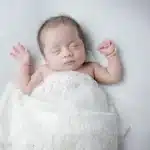Image credit to Wallpaper Flare
Triplets are triple babies delivered in one pregnancy. Identical twins, triplets, and all other higher-order pregnancies can be divided into their zygosity or the degree of genetic similarity. While triplets are most commonly fraternal, it’s not impossible for triplets to be identical.
Identical triplets are very rare, though possible. Continue reading to know more about these same babies that almost have the same DNA.
How Identical Triplets Happen
Many people may be familiar with using the terms “identical” and “fraternal” to refer to multiples. Most generally, however, these terms refer to how the multiples formed in utero.
Monozygotic or identical multiples form from the same egg. When this occurs with identical twins, the fertilized egg has split in two. With identical triplets, the egg may split just once into three or it may split twice where first the egg has split first in two, and then one of the two has split again, forming three embryos that share the same general DNA characteristics.
Monozygotic triplets are always the same sex, either all boys or all girls. Some monozygotic triplets are actually quadruplets where one embryo has vanished or been reabsorbed.
Chances of Identical Triplets
Studies on the frequency of monozygotic triplets vary. A 2012 case report of a healthy set of spontaneously conceived identical triplet boys lists the incidence at 1 in 100,000 live births. Most of the reported cases are conceived through assisted reproductive techniques.
It noted that only seven other cases of spontaneously conceived identical triplets were known. A 2015 paper states the rate of incidence of identical triplets is 100 times more frequent with assisted reproductive techniques than spontaneous conception, but is still extremely rare. So the odds of having identical triplets are very low in both assisted and non-assisted reproductive techniques.
Risks of Identical Triplets
A monozygotic triplet pregnancy carries the risks of a monozygotic pregnancy with a shared placenta, plus the additional risks of a triplet pregnancy. This type of pregnancy could be more likely to encounter problems related to:
preeclampsia
preterm labor
transfusion syndrome
gestational diabetes
fetal growth restriction
How Fraternal Triplets Happen
The vast majority of triplets are trizygotic, meaning that each formed from a separate zygote, or egg and sperm combination. They are often referred to as “fraternal” multiples, and they share the same amount of genetic similarities as any other siblings.
Nonetheless, it’s not uncommon for triplets to be dizygotic, happening when two different eggs are separately fertilized and one of those fertilized eggs is subsequently divided into two. In other words, two of the triplets are monozygotic (identical) twins, fully having the same kind of DNA characteristics, while the third triplet having been conceived with another egg and sperm has a different genetic material from the other two.
Signs of Triplets Pregnancy
There are a few pregnancy symptoms that could clue you in that you might be having triplets. These may include high levels of human chorionic gonadotropin (hCG) or alpha-fetoprotein in the blood, or intense morning sickness. However, the only way to verify multiple pregnancies is through ultrasound testing,
Fertility Treatments and Multiples
The incidence of multiple pregnancies — twins, triplets, and more — has increased tremendously during the past 50 years with the use of assisted reproductive technology. However according to the American Society for Reproductive Medicine, still fewer than 1% of those having fertility treatments have triplets or more.
Superovulation may be a part of assisted reproductive technology treatments such as in vitro fertilization. Fertility drugs cause the release of multiple eggs, rather than just one egg ovulated during a menstrual cycle.
Medically assisted reproduction is more commonly associated with multiple pregnancies, but naturally conceived pregnancies can still result in twins, triplets, and higher-order multiples.
Also Read : What Are Irish Twins?
Key Takeaways
The chances of having identical triplets are extremely low, especially if one had a completely natural pregnancy. In the event of an assisted pregnancy, it could be with the aid of IVF or any other technique that increases the chances of having identical triplets. However, for both non-assisted and assisted pregnancies in general, the chances are incredibly low.








